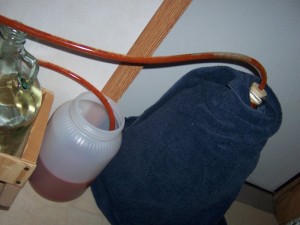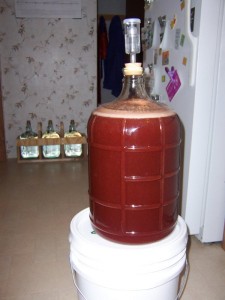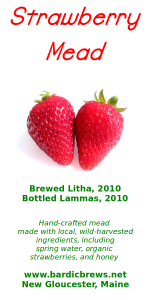I’ve been wanting to experiment with using wild yeast, local in my atmosphere, to make mead. I’ve been getting such good results with my other recipes that I’ve been hesitant to change from it. So finally, I decided to do a one-gallon experimental batch.
This method is pretty close to Ethiopian Tej, a honey wine brewed with wild yeast there. I learned about this method from the book Wild Fermentation by Sandor Kats. This is a great brewing book, as well as for fermented foods (sauerkrauts, etc), which have also been a big part of my life in the past year.
The method is simple; combine honey and water in a wide-mouth jar, cover with a cloth for a few days until it starts to bubble (after wild yeast gets into the must), then transfer to a carboy with an airlock to ferment as normal.
I started with a quart of honey:
I then filled the rest of the jug with spring water, covered with cloth, and let it sit outside for a few hours:
I’m very intrigued by how this will turn out. I’ll keep a close eye on it, and will provide updates as they happen.
UPDATE (Sept 22): Unfortunately this didn’t turn out. I kept it out for several weeks, stirring it occasionally, hoping the yeast would colonize it. It didn’t happen. Possibilities include: I didn’t stir it enough; I shouldn’t keep the cloth on it; the ratio of honey:water was too high. I’m sure I’ll try this again sometime, but the results from this batch were negligible at best.


















